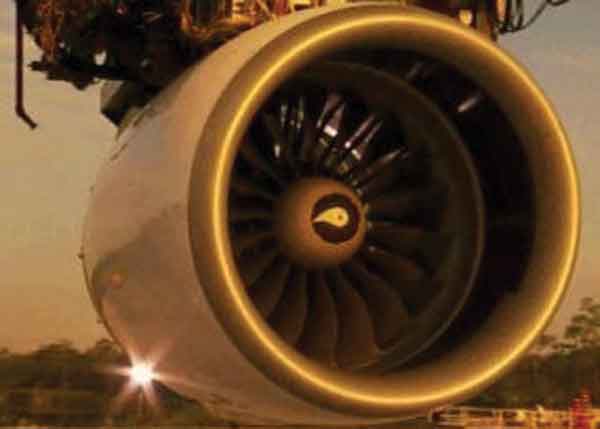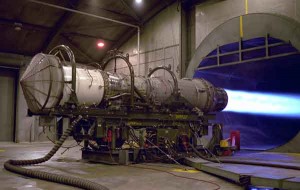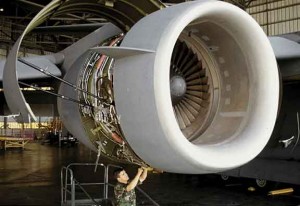Very few companies in the world can claim to have mastered the art of producing high-performance military engines and most of them are in the United States and Europe. Russia and Europe lag behind the US in military aerospace technology. China is accelerating its efforts to produce modern military power plants and considering its steely determination and huge investments, it should develop indigenous capability to reckon with in around two decades. As for India, its frustrating experience with the Kaveri engine has shown that designing and manufacturing an engine incorporating cutting edge technology for a combat aircraft is not easy, even for a nation well advanced in space and nuclear regimes.
Creating an aero engine for an air superiority fighter jet or a heavy-lift transport plane or a light attack helicopter is no child’s play. The demands of combat performance are far more taxing than those of commercial ones. Therefore, engine designers are constantly confronted with newer and tougher challenges. Production also requires advanced techniques and extensive automation to ensure consistent quality and reliability. The tens of thousands of parts that make up an engine have to be fashioned to exacting tolerance, down to a few microns. An ordinary turbofan blade, for instance, must perform without significant deflection despite being subjected to heat that exceeds the melting point of most metals.
…Creating an aero engine for an air superiority fighter jet or a heavy-lift transport plane or a light attack helicopter is no child’s play…
Consequently, very few companies in the world can claim to have mastered the art of producing high-performance military engines and most of them are in the United States and Europe. Russia and Europe lag behind the US in military aerospace technology. China is accelerating its efforts to produce modern military power plants and considering its steely determination and huge investments, it should develop indigenous capability to reckon with in around two decades. As for India, its frustrating experience with the Kaveri engine has shown that designing and manufacturing an engine incorporating cutting edge technology for a combat aircraft is not easy, even for a nation well advanced in space and nuclear regimes.
Advanced engines are built mainly with high-strength materials such as titanium, nickel, aluminium, and super-alloys based on nickel and cobalt that can withstand extremely high temperatures. Lightweight composite materials are becoming all the rage in aircraft manufacture and are quickly finding their way into power plants as well. They are extremely strong and durable and can be fashioned into complex shapes. Military engines must be capable of withstanding the most trying conditions including high temperatures, high speeds, rapidly varying altitudes, intensive manoeuvring, rapid and frequent changes in throttle settings.
Military power plants may be divided into some major categories – low-bypass turbofans that generally power fighter jets; high-bypass turbofans that propel large transport aircraft, flight refuelling and other large military aircraft; turboprops that are employed on more lower-speed, smaller transport and surveillance aircraft and turbo shafts typically used on helicopters.
While military and commercial jet engines often have very different performance requirements, the materials and construction techniques used to make key components such as the engine core are in many cases quite similar. For instance, Pratt & Whitney’s F117 dual-spool high-bypass turbofan engine that powers the Boeing C-17 Globemaster III military transport aircraft, which is expected to join the IAF early next year, is a close derivative of its PW2037 commercial engine fitted on the Boeing B757. With military aviation getting ever more technologically complex, what does the future hold for aero engine development?
Fighters of the Future
The resources required to produce modern combat aircraft are so huge that only the US has been able to field a fifth-generation fighter, the combat-proven F-22 Raptor. But even the world’s richest and most powerful nation is not immune to shrinking defence budgets and realises that aircraft must not just be affordable to buy but operate economically during their entire lifetime. And that depends mainly on aero engines.
“We have run out of money, so now we must think,” was the frank admission of United States Air Force (USAF) Vice Chief of Staff General Philip Breedlove last July. For this reason, even the prestigious Lockheed Martin F-35 Lightning II, the most expensive weapons programme in history, is facing major production cuts. In November, Switzerland picked the JAS 39E/F Gripen as its new fighter over the Eurofighter Typhoon and Dassault Rafale, not because it was the best but because it met its requirements at the lowest price. This trend does not yet seem to have touched the IAF, which recently shortlisted the two most expensive combat aircraft and dumped the more economical Gripen.
Fighter jet engines are probably the most highly-stressed machines on the earth. Apart from take-off and recovery the engines of a transport plane or tanker generally run at fairly steady parameters for most of a flight. However, a fighter aircraft engine is routinely exposed to extreme speed changes, sometimes from maximum power to idling and back to maximum in a matter of seconds as pilots frequently and rapidly alter throttle settings during high-intensity combat manoeuvring. This means equally rapid temperature changes (or thermal cycling) that can trouble even the most rugged engine. A stark example is of the USAF’s experience with the Pratt & Whitney F100 engine which powers the F-15 Eagle and F-16 Fighting Falcon. This afterburning turbofan’s service life reportedly turned out to be 30 per cent lower than expected because it was subjected to more than five times the number of full throttle transients it had been designed for.
Military engines must be capable of withstanding the most trying conditions…
For all their complexity and sophistication, fighter engines are not always efficient. They operate best at rather limited optimum parameters; any time they enter a different regime their performance drops, sometimes drastically. But fighters of the future will have a new kind of jet engine – a variable-cycle turbine that can run in at least two modes, one for high speed and one for fuel efficiency. They will be more fuel-efficient by shaping the air flow at higher compression levels than ever. This is crucial if the USAF is to meet its ambitious goal of reducing fuel burn in existing aircraft by five per cent by 2016, ten per cent by 2020 and 20 per cent by 2030. Other operators too would surely covet such fuel-efficient engines.
In 2007, the USAF selected General Electric and Rolls Royce to demonstrate next-generation engine technologies under two futuristic research initiatives, the Adaptive Versatile Engine Technology (ADVENT) and the Highly Efficient Embedded Turbine Engine (HEETE) programmes. Both are heavily dependent on software. Since many performance parameters can be fine-tuned using software, it is becoming an increasingly vital aspect in aero engine design. Most modern engines are fitted with Full Authority Digital Engine Control (FADEC). GE claims its HEETE design may achieve Overall Pressure Ratios (OPR) up to 70:1. In contrast, the Pratt & Whitney F135 that is fitted on the F-35 Lightning II, claimed to be the world’s most powerful fighter engine, has an OPR of around 30:1. And Pratt & Whitney’s PurePower PW1100G Geared Turbo Fan (GTF) engine that is due to power the Airbus A320neo is credited with a top OPR of 50:1. Pratt & Whitney is also believed to be quietly working on its future PW9000 engine, a combination of the best features of the F135 and the PurePower GTF. It is expected to have significant fuel burn improvements and extend the range and endurance of any platform it powers.
Fighter jet engines are probably the most highly-stressed machines on the earth.
The goal of ADVENT is to develop an efficient variable-cycle engine in the 20,000lbf (89 kN) thrust class for next generation military aircraft. Operational testing is slated to begin sometime next year. The engine was originally expected to power the USAF’s next-generation bomber but since the bomber programme is itself in doubt, Rolls Royce predicts that the aero engine will be better suited for a potential 2020 engine upgrade for the F-35 Lightning II. A key objective of ADVENT is to introduce a third duct for bypass air around the engine core, which is expected to reduce Specific Fuel Consumption (SFC) at high speeds. Clearly, even for fighter engines, the days of brute power are coming to an end and fuel efficiency will assume increasing importance.
Military Transports Go Civil
Till quite recently military engine makers did not feel too constrained by the noise and emissions limitations that apply to civilian manufacturers. But military aircraft especially transport planes, are now beginning to feel the heat of the green brigade. Last year, Europrop International secured civil type certification for the TP400-D6 turbo-prop engine powering Airbus Military’s under-development A400M large transport aircraft that is slated for first delivery next year. It is claimed to be the first large turbo-prop engine to have been certified by the European Aviation Safety Agency (EASA) and the first military engine to have been certified by the EASA to civil standards from the outset – a trend is only likely to intensify.
Indeed, environmental and fuel-economy pressures may force revolutionary changes in turbofan engine architecture, whether military or commercial, within a decade or two. The ceaseless quest for greater efficiency means that engine bypass ratios and fans will continue to grow in size. This, however, makes it more difficult to fit engine to airframe without increasing the weight of the engine mounting and consequently, the wing itself. Higher pressure ratios and higher temperatures, are also necessary to obtain maximum thermal efficiency from an engine core making it more challenging to ensure a long engine life. How technologists choose to resolve these conflicting issues remains to be seen.








Everyone loves what you guys are up too. This type of clever work and reporting!
Keep up the wonderful works guys I’ve added you guys to my personal blogroll.